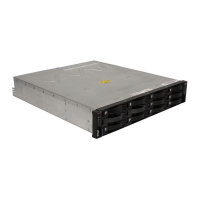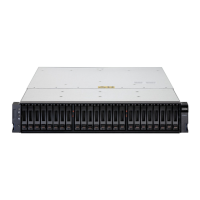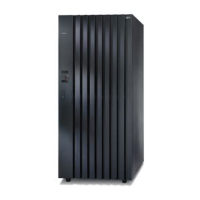Appendix C. CLI 543
Draft Document for Review August 30, 2007 12:59 am 7065appCLI.fm
Execute commands that are specified in a command script over an out-of-band
management connection
Execute commands on a given storage subsystem that are specified on the command line
over an in-band management connection
Execute commands that are specified in a command script over an in-band management
connection
List defined storage subsystems
Add storage subsystems to the configuration file of the Enterprise Management Window
Remove already defined eMail alerting
Configure email alerting
Configure or remove SNMP alerting
As we said, the CLI can perform all the functions provided by the Storage Manager GUI. In
the GUI, the first four tasks are performed in a subsystem Management windows of a specific
subsystem and the last 5 tasks (“list defined storage subsystems” and onwards) can be
performed in the Enterprise Management Windows of the client
Table 21-2 gives an explanation of the various parameters which can be specified with SMcli
commands.
Table 21-2 SMcli parameters
Note: Specify always IP addresses or hostnames from the management interface of all
installed DS3000 controllers.
Option Description
<host name or IP
address>
IP address or host name of the first and second controller
management port.
Host name or IP address of the host running the Storage Manager
agent for in band management.
Use either IP or hostnames or subsystem name or WWID
-A
-A <IP C1> <IP C2>
Use this parameter to add a storage array to the configuration files.
If you do not follow the -A parameter with a
host-name-or-IP-address, auto-discovery scans the local subnet
for storage arrays.
-X Remove a storage subsystem specified by the name (-n) or the WWID (-w) or
the host or IPaddress.
-a Use this parameter to add a Simple Network Management Protocol (SNMP)
trap destination or an email address alert destination.
When adding an SNMP trap destination, the SNMP community is
automatically defined as the community name for the trap and the
host is the IP address or Domain Name Server (DNS) host name
of the system to which the trap should be sent.
When adding an email address for an alert destination, the
email-address is the email address where you want the alert
message to be sent.

